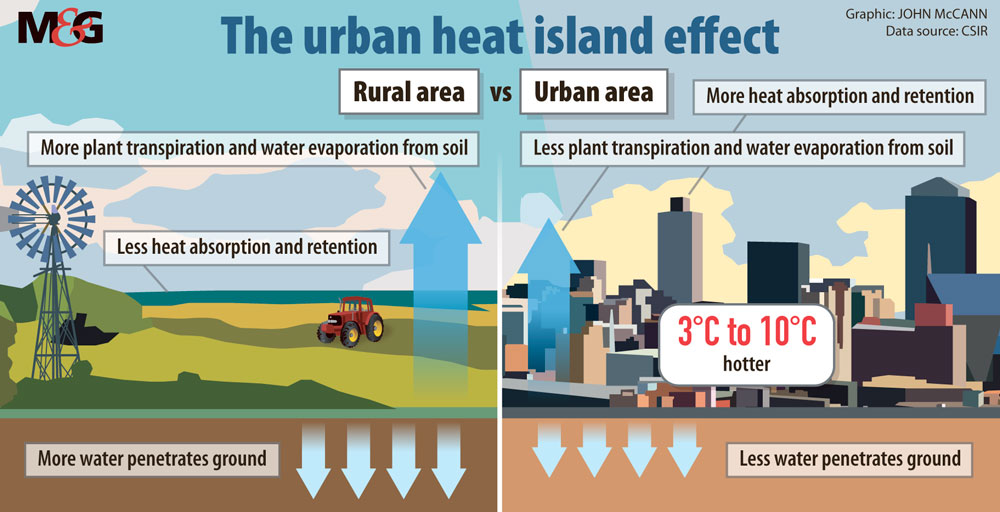Durban Harbour (Photo by Hoberman Collection/Universal Images Group via Getty Images)
Researchers have found that South Africa’s cities are at risk of becoming heat islands amid cooler surrounding rural areas.
The heat island effect is created by buildings, roads and other infrastructure that absorb and re-emit the sun’s heat far more than natural landscapes such as forests and water bodies do, according to the United States Environmental Protection Agency.
Researchers at the Centre for Scientific and Industrial Research (CSIR) “found that warmer cities mean increased energy demand for cooling needs, which, in turn, will increase greenhouse gas emissions. Higher temperatures also put a strain on infrastructure … and ultimately have negative effects on human health and comfort”.
Durban has signed an urban nature declaration to expand, restore and invest in trees, parks and green spaces as part of its climate change planning, alongside 31 other cities around the world.
The city has started a riverine management programme to improve its rivers, which will improve resilience and create thousands of green jobs.
The CSIR has developed a model that can be used by any city to “mitigate the effects of the urban heat island” through recommending key interventions.
The researchers have been working with the eThekwini municipality to apply the model in Durban.
The move is part of efforts by C40 — a coalition of cities and mayors — to encourage cities to address risks related to heat and water, ensuring that by 2030, 30% to 40% of total city surface areas will consist of green or permeable space such as street trees, urban forests and parks that absorb carbon dioxide, build urban drainage systems designed to absorb water and prevent flooding and have energy efficient buildings. The cities also recognise the value that green spaces bring to people’s wellbeing.
The CSIR said that more than half of South Africa’s population lives in urban areas and research shows that this phenomenon will increasingly affect the lives and livelihoods of residents as urban populations grow.
Mark Watts, C40 cities executive director, said: “Throughout the Covid-19 pandemic, we were reminded that accessible, green spaces are essential for livable, climate ready and crisis prepared cities.
“As we seek to deliver a green and just recovery, investing in and implementing nature-based climate solutions will be imperative to public health and well-being, as well as the success of global efforts to tackle the climate crisis.”
By 2050, about 570 cities will be vulnerable to rising sea levels, more than 500 cities will be vulnerable to water shortages, and 970 cities will be vulnerable to extreme heat, according to C40.
 (John McCann/M&G)
(John McCann/M&G)
The most acknowledged scientific report on thousands of peer-reviewed climate science is the Intergovernmental Panel on Climate Change (IPCC) 1.5 degree report. Its findings were expected to be a game changer in the global response to climate change but the jury is still out.
In a C40 paper on what the IPCC report meant for cities, authors said that improvement of green urban infrastructure with increased use of nature-based solutions could reduce flood and drought, enable water conservation and reduce urban heat island effects.
“Higher temperatures also put a strain on infrastructure such as roads, pavements and railways and ultimately have negative effects on human health and comfort,” the authors wrote.
Tunicia Phillips is a climate and economic justice reporting fellow with the Adamela Trust, funded by the Open Society Foundation for South Africa